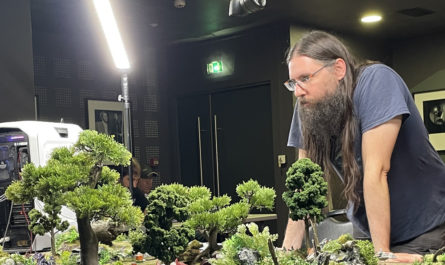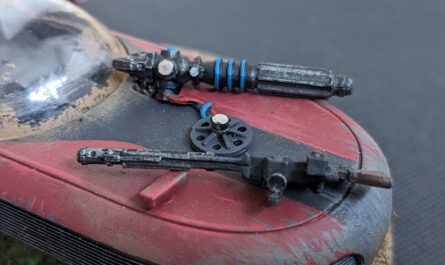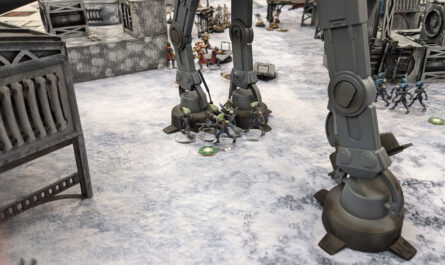Want to make your game table both immersive and tactically engaging? Do you think playing on Coruscant or Mustafar should feel different? Then we’re on the same wavelength. In this article, I focus on the case of Yavin IV. I’ll share ideas to help you create an exciting battlefield set on this iconic moon of the saga.
Foreword
Welcome to this series called “My planet, my war“. Each pair of articles explains how to build a visually stunning table but, more importantly, a table that’s interesting to play on, that is offering diverse terrain functionalities. This is the idea behind “The beauty and the brain.”
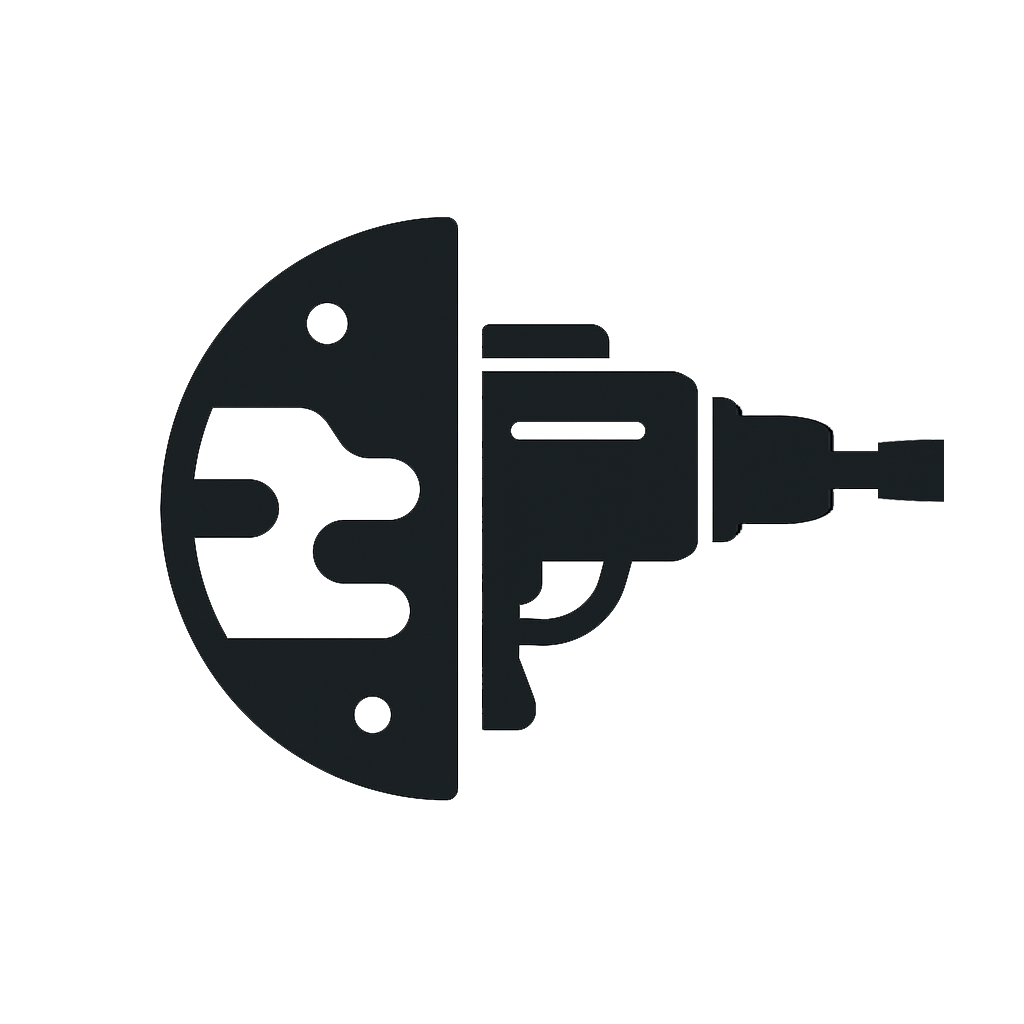
The “My planet, my war” articles come in pairs and focus on an iconic planet from the Star Wars universe:
- The first article, titled “Playing on [planet name]”, presents the table and its gameplay features;
- The second, titled “Building [planet name]”, shows you how to build the terrain that makes it up.
Introducing Yavin IV
Yavin IV is a moon orbiting the gas giant Yavin Prime, located in the Outer Rim. It first appears in Star Wars: A New Hope (1977), where it serves as the Rebel Alliance’s secret base. This is where the Rebels launch their decisive attack against the Death Star.
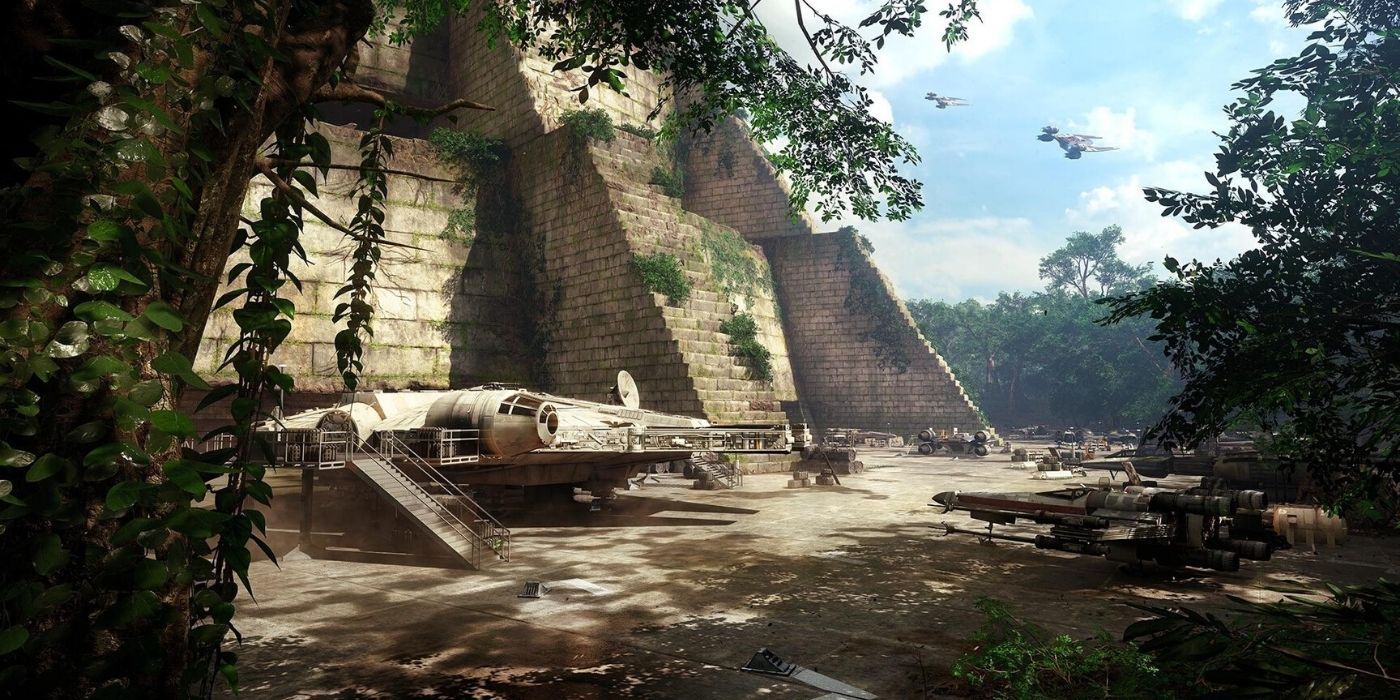
Topography and Flora
Yavin IV is covered in vast tropical jungles, dense swamps, and grassy plains. The canopy of its jungle is particularly thick, housing a wide range of sometimes dangerous flora. Giant trees, tangled vines, and exotic flowers dominate the landscape, creating an atmosphere that’s both beautiful and wild.
Buildings and Structures
The moon is best known for its majestic Massassi temples, ancient pyramid-like structures built by the Massassi, a species once enslaved by the Sith thousands of years ago. These stone temples, now overgrown with vegetation, are both historical relics and strategic locations.
Yavin in 4 key concepts
Massive ruins, dense jungle, secret base, and limited vision are the four main concepts to use when designing a Yavin IV battlefield. They will shape both the look of your board and the tactical role of each terrain piece.
Terrain choices and special rules
Temples and walls
Temples and walls are the most imposing terrain features on the board. They block line of sight and provide heavy cover when partially obscuring it. Their size can vary from one structure to another, and smaller ones may be crossable (Height 1 or 2).
| Terrain description | Crossable | Line of sight | Cover |
|---|---|---|---|
| Temple | ✔️ (via climbing) | ❌ | Heavy |
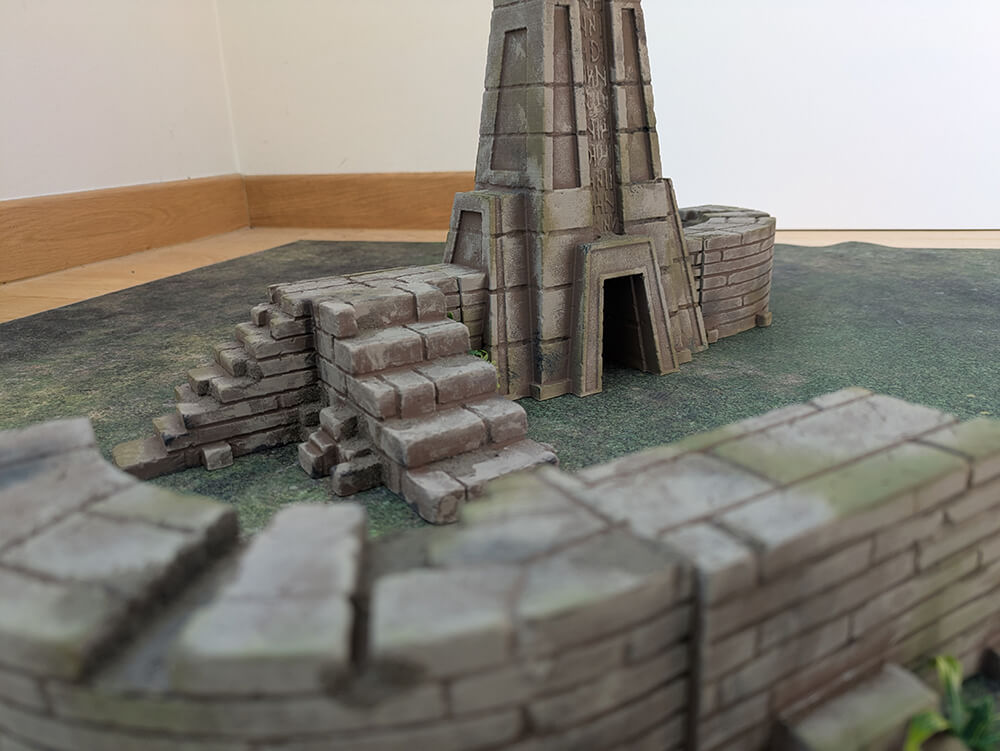
Ruined walls
These are remnants of ancient gardens or pathways. Due to their low height, they don’t block line of sight and are crossable. They still provide heavy cover to any unit sheltering behind them.
| Terrain description | Crossable | Line of sight | Cover |
|---|---|---|---|
| Temple walls | ✔️ | ✔️ | Heavy |
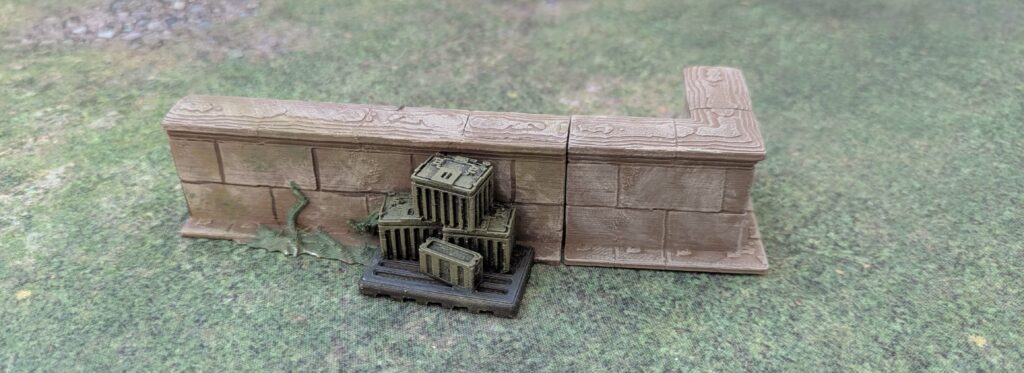
Supply crates and cargo
Although they serve a similar role, supply crates provide only light cover. These various goods are stored in containers of uneven durability: some hold food, others fuel. A blaster shot can easily pierce or ignite them, justifying their light cover status.
| Terrain description | Crossable | Line of sight | Cover |
|---|---|---|---|
| Supply crates | ✔️ | ✔️ | Light |

Dense jungle (special rule)
Covering most of Yavin IV, the jungle can be your ally if used well—or a nightmare if ignored. The jungle is an impassable area terrain that offers no cover. Additionally, it blocks line of sight beyond range 1. This reflects the density of the flora, which prevents any unit from seeing through it unless they’re close enough.
| Terrain description | Crossable | Line of sight | Cover |
|---|---|---|---|
| Jungle | ❌ | Range 1 only | ❌ |
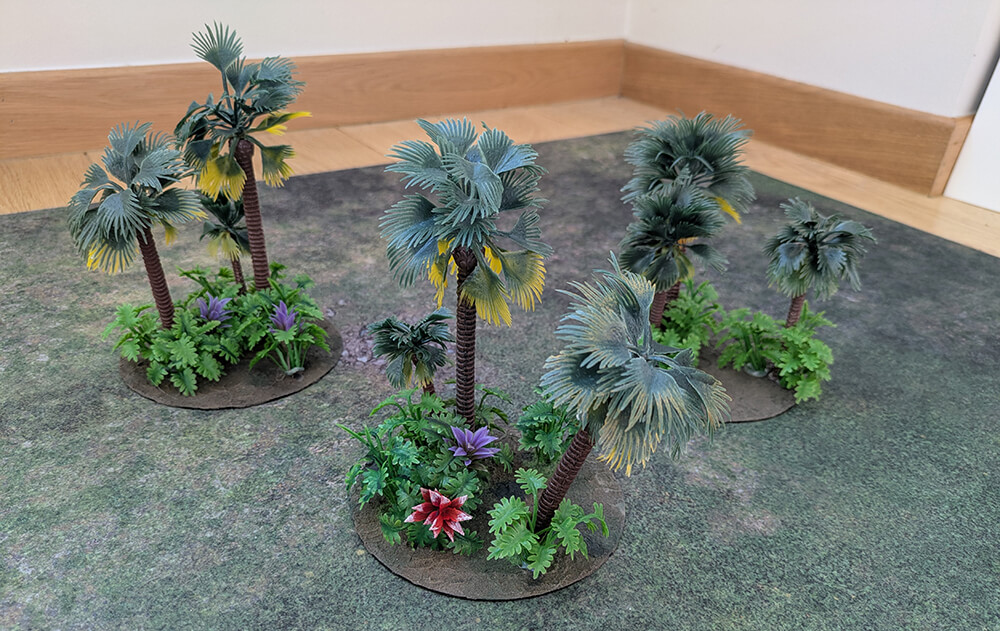
This special rule needs a bit more detail. In Example 1 below, the Fleet Trooper cannot see Orson Krennic or the Pyke Soldier because the line of sight crosses the jungle.
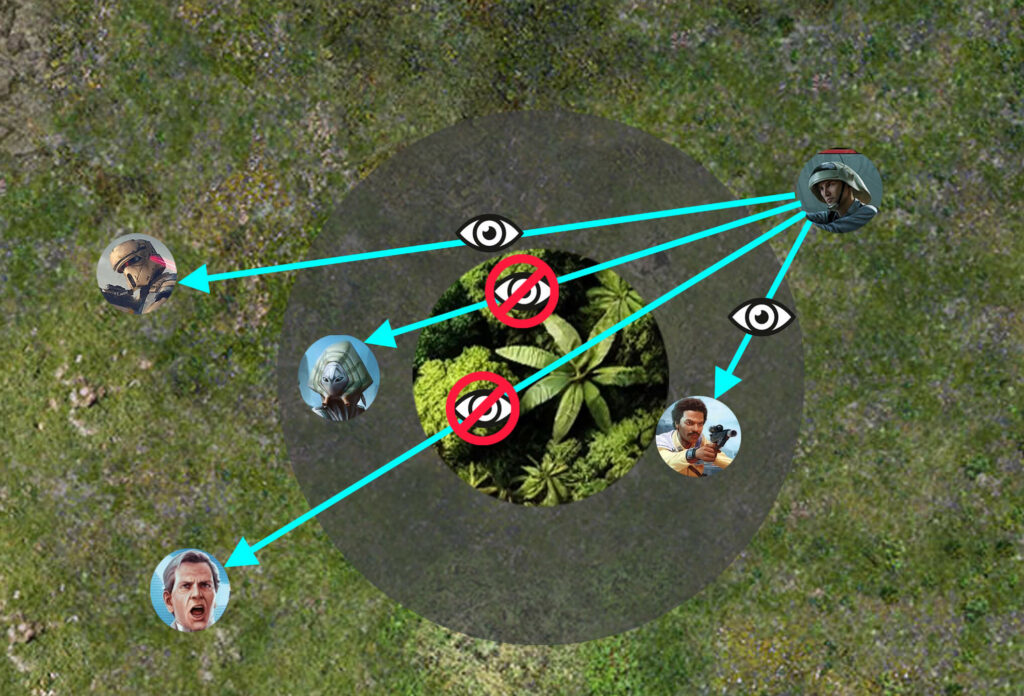
However, two units may see each other if both are within range 1 of the jungle’s edge, even if the line of sight crosses the terrain. In Example 2, the Pyke Soldier can see Lando because he’s within the range-1 perimeter of the jungle—even though the terrain is in the way.
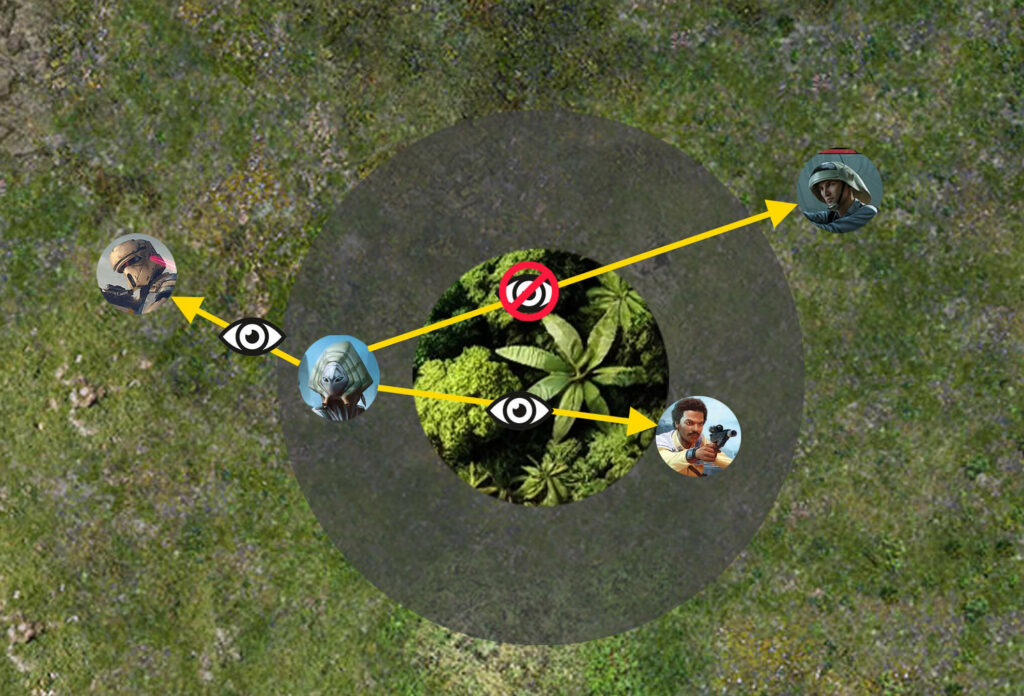
On his side, the Fleet Trooper is invisible to the Pyke Soldier as long as he hasn’t entered the jungle area. This rule reflects, in gameplay terms, the limited visibility imposed by the jungle, preventing anyone from seeing beyond a short distance.
Finally, in Example 3 below, Lando is in base contact with the Jungle terrain. When a unit is in contact with the jungle terrain, it can ignore the limited line of sight rule. This allows Lando to see the Shoretrooper. This rule reflects how vegetation becomes less dense as you get closer, so it doesn’t block visibility anymore.
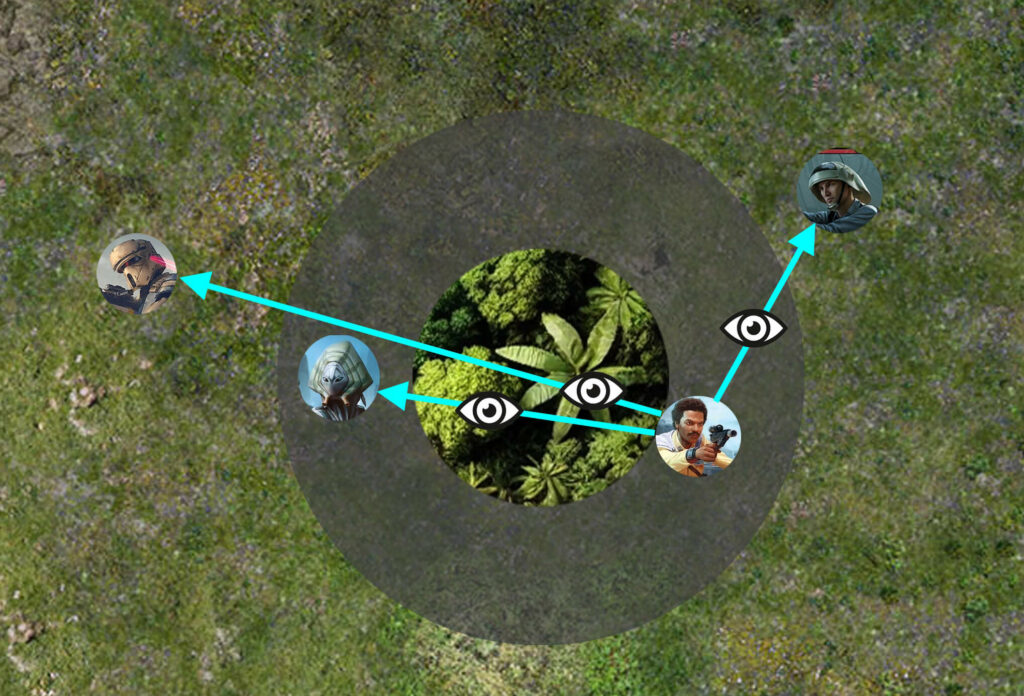
From a tactical point of view, the jungle offers several interesting approaches:
- A unit can move forward undetected if the Jungle remains between it and the enemy unit in the line of sight.
- A sniper in contact with the Jungle can fire at enemy units beyond range 1, as shown in the example with Lando. Moreover, this sniper cannot be targeted by enemy units beyond range 1, provided that the Jungle blocks the line of sight, of course. This rule supports the idea that shooters can use dense vegetation for cover without being prevented from carrying out ambush shots.
- Unless you’re in base contact with it, the jungle blocks long-range fire and encourages close-quarters combat.
In short, what makes the jungle so appealing is that every unit type can take advantage of it. Whether specialized in short- or long-range fire, all can benefit from a smart use of terrain.
Ferns (special rule)
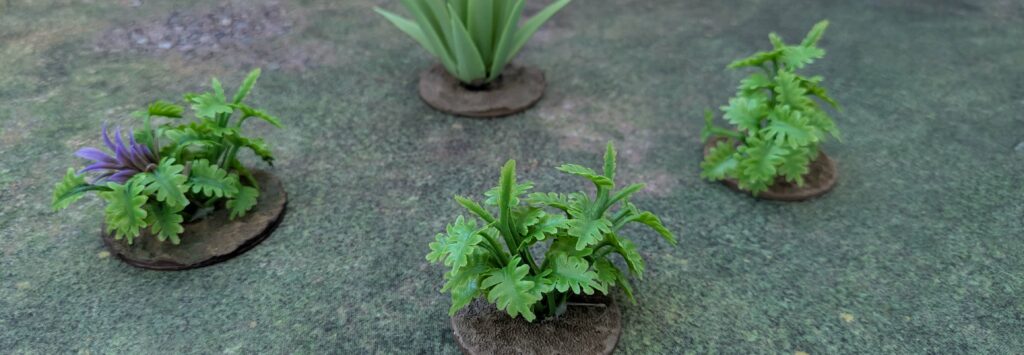
Clearings are also overrun with invasive plants such as ferns. These plants do not block line of sight and provide no cover from blaster fire. These small terrain pieces are impassable—except for vehicles. For the sake of gameplay, these terrains are destructible: when a vehicle ends its movement on one of these zones, remove it from the battlefield. The idea is to make unit movement less linear without turning the game into a nightmare for large-based vehicles.
| Terrain description | Crossable | Line of sight | Cover |
|---|---|---|---|
| Ferns | only by vehicles | ✔️ | ❌ |
From a tactical standpoint, ferns offer you a choice: Do you sneak your units through the overgrowth? Or do you send in your vehicle to carve a path and ease your troops’ advance?
Swamps
Finally, the few swamps scattered around Yavin IV also slow down infantry movement. A swamp is difficult terrain that provides no cover and does not block line of sight. Better not linger too long in these terrain zones…
| Terrain description | Passable | Line of sight | Cover |
|---|---|---|---|
| Swamp | ✔️ but difficult terrain | ✔️ | ❌ |
Summary table
| Terrain description | Crossable | Line of sight | Cover |
|---|---|---|---|
| Temple | ✔️ | ❌ | Heavy |
| Temple walls | ✔️ | ✔️ | Heavy |
| Supply crates | ✔️ | ✔️ | Light |
| Jungle | ❌ | within range 1 only | ❌ |
| Ferns | only by vehicles | ✔️ | ❌ |
| Swamp | ✔️ but difficult terrain | ✔️ | ❌ |
Ready for battle?
The Yavin IV battlefield offers a unique experience: tight lines of sight, a few strongholds (temples), and plenty of terrain to maneuver around. It’s an ideal table for close-quarters armies but a skilled player can still use a long-range list, as long as they control the angles and high ground carefully.
In this article, I shared several ideas to design a battlefield that is both fun and tactically stimulating. By giving different functions to each piece of terrain, I wanted to show how a well-thought-out battlefield can enhance your Star Wars: Legion games. While Atomic Mass Games is doing its best to breathe new life into the game, it’s also up to us, the players, to support this dynamic… and help it reach for the stars.
Next time on Critical Hit, I’ll show you how to build this table step by step, with tips for assembling and painting temples, choosing foliage, and creating modular jungle terrain. Subscribe to be notified of the next article!
🎯 Don’t miss our next article
Play smart, play better.
